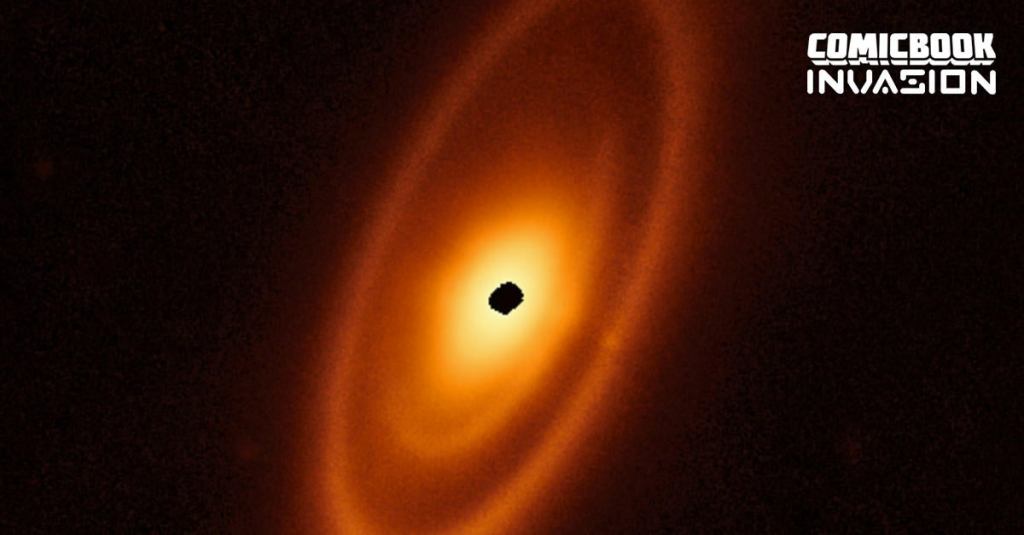Though some weeks are quieter than others, the Webb Space Telescope continues examining the further reaches of space. Most recently, the observatory looked towards the constellation Piscis Austrinus, some 25 light years away. More specifically, the telescope captured an image of the star Formalhaut and the massive asteroid belts that are found orbiting it. In total, three different belts can be seen in the picture, which extends into space a whopping 14 billion miles from the surface of the star. In comparison, that’s roughly 150 times the distance Earth is away from the Sun.
Videos by ComicBook.com
“I would describe Fomalhaut as the archetype of debris disks found elsewhere in our galaxy, because it has components similar to those we have in our own planetary system,” said András Gáspár, lead author of a new paper released in conjunction with the picture. “By looking at the patterns in these rings, we can actually start to make a little sketch of what a planetary system ought to look like – If we could actually take a deep enough picture to see the suspected planets.”
More about Fomalhault and its massive asteroid belts can be read in the latest study, recently published in Nature Astronomy.
What is the Webb Space Telescope?
In short, the Webb observatory is the successor to the Hubble Space Telescope. Using its new technology, scientists have been able to examine parts of the known universe previously unobservable.
“If you think about that, this is farther than humanity has ever moved before,” NASA administrator Bill Nelson previously said of the JWST. “And we’re only beginning to understand what Webb can and will do. It’s going to explore objects in the solar system and atmospheres of exoplanets orbiting other stars, giving us clues as to whether potentially their atmospheres are similar to our own.”
“Our goals for Webb’s first images and data are both to showcase the telescope’s powerful instruments and to preview the science mission to come,” astronomer Klaus Pontoppidan, Webb project scientist at STScI, added of the images. “They are sure to deliver a long-awaited ‘wow’ for astronomers and the public.”
For additional space and cosmic stories, check out our ComicBook Invasion hub here.









